Everything you need to know about wood trellises
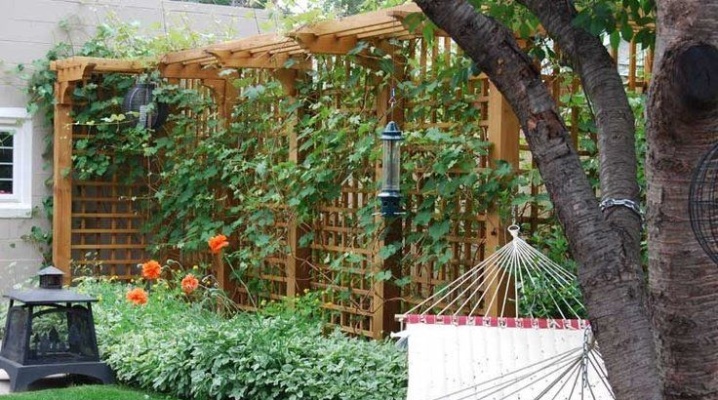
Often, plants used in landscape design require additional support. In this case, wooden trellises are used. They not only save the plant from growth problems, but also solve decorative problems. Wood trellises are considered the most popular type of such a support - such a structure is not suitable for a rare site.
Peculiarities

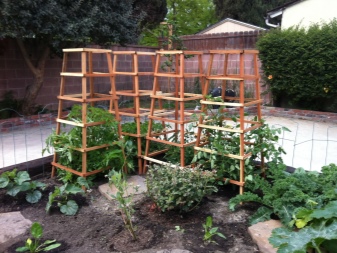
The tapestry is a European invention that has become in demand all over the world. This structure serves as a vertical support for climbing plants. It usually looks like a flat trellis, but if it is a trellis for vegetables, its device can be reduced to a pair of rungs. Massive wood trellises are often used as permeable partitions that do an excellent job of zoning the site.
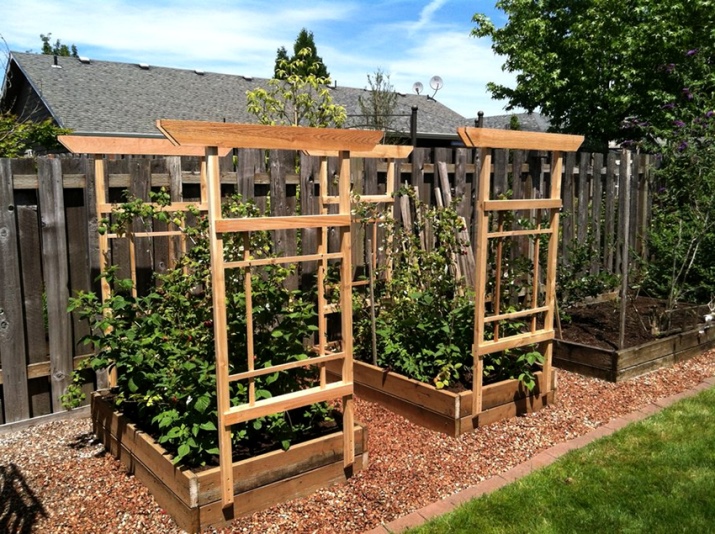
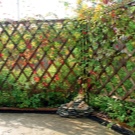
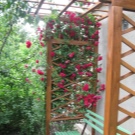
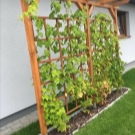

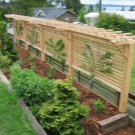
By the way, "trellis" in translation from Italian means "support, shoulder". This type of support has great advantages that distinguish it from pergola and trellis, for example.
The main features of the trellis:
-
shoots are evenly distributed in space and receive plenty of sunlight;
-
the leaves of plants, which are attached to the trellis, synthesize organic substances in greater quantities, therefore, the fruiting of these crops also increases (the berries will ripen faster on raspberries or currants growing on the trellis);
-
the bushes are better ventilated, which means that they are less likely to be affected by fungal diseases, and such plants also receive more benefits for pollination;
-
for the winter it is easier to cover the bushes on the trellis;
-
you can allow the plants to be mechanically processed, harvesting can also be done with the connection of mechanization.
With the same plywood, you can create a hedge or a green wall. Plants (following the example of clematis) braid the cells of the lattice completely - it seems that the loach grows straight vertically, as if it appears from the air. It certainly looks very nice.
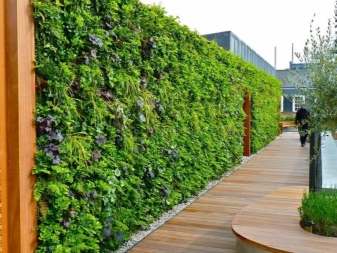

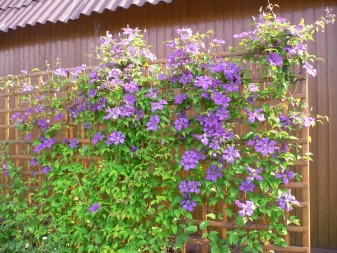
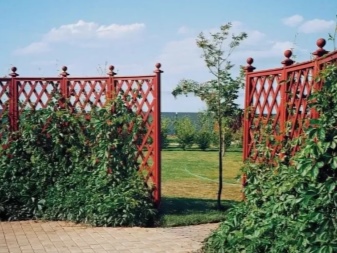
Species overview
The choice of the type of trellis depends on the environmental conditions, on the biological characteristics of the cultivated crop variety and other points.
Most often these are:
-
vertical single-plane trellis - it can resemble lattices, fences, fences, often used to decorate the walls of buildings;
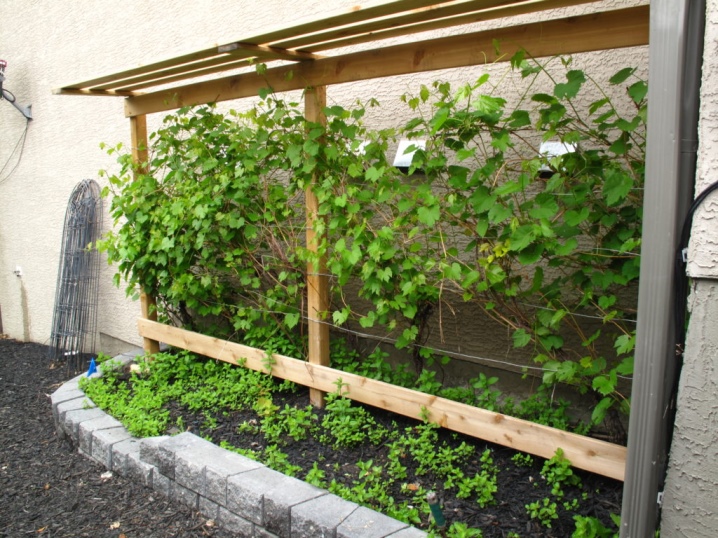
-
oblique two-plane - these are structures consisting of several parallel flat trellises connected by a single-plane trellis;
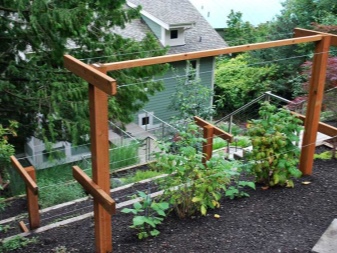
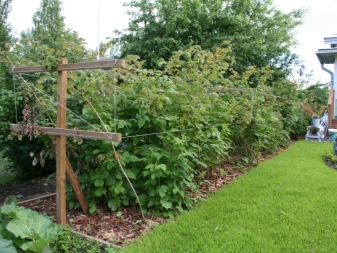
-
horizontal - rare, but occurs;
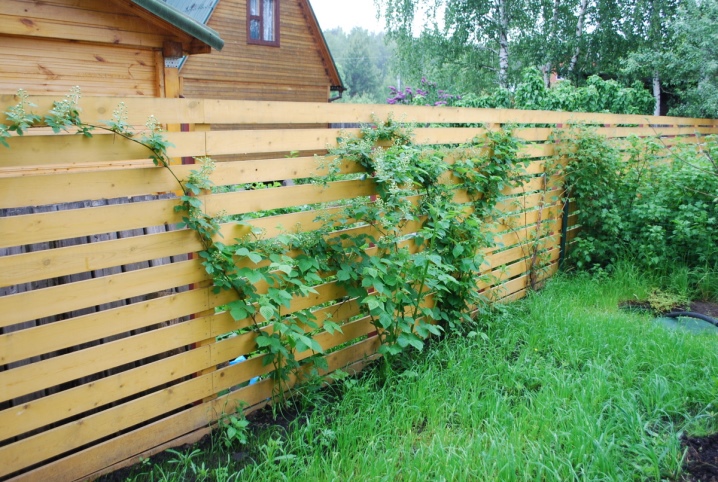
-
sliding - the design is complex, but multifunctional;
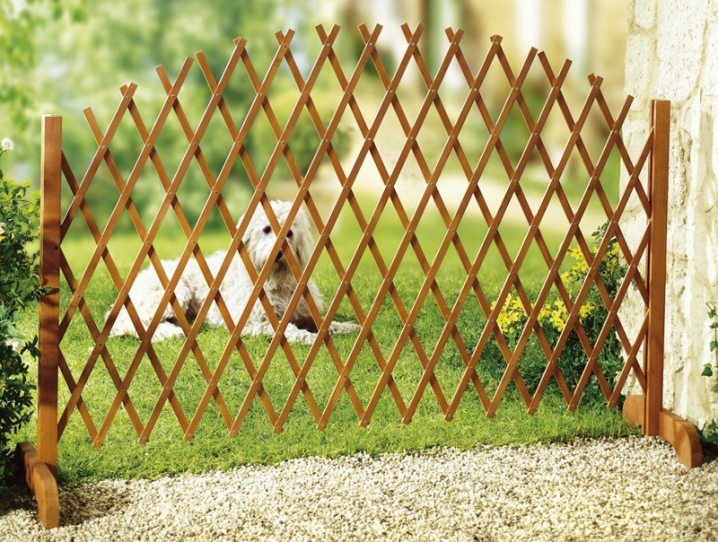
-
corner - helps to green the corner areas of the site.
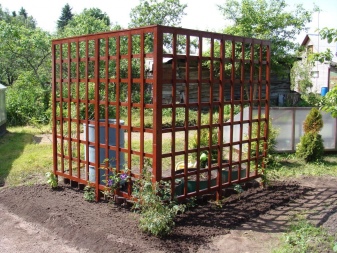

Trellis structures are made from slats and bars, create interesting patterns in cells (even in the form of a leaf), and are used for tall flowers, berries and vegetables.
The most attractive thing about the tapestry is the ability to make it yourself.
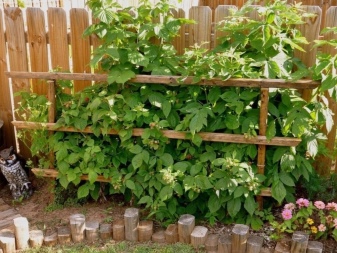
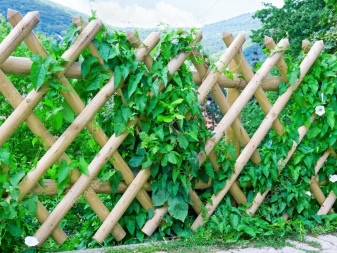
Step-by-step manufacturing instructions
If it was initially decided to make a trellis made of wood, you need to work out a sketch, drawings in advance, construction should follow clear instructions. In any case, even if you act without drawing the project, you need to make a calculation, determine the dimensions, understand how many planks, rails, and bars are needed. You will also have to calculate the number of fasteners.
The list of tools is universal:
-
ruler;
-
hammer;
-
a solution that will keep the trellis racks in the ground;
-
nippers;
-
hacksaw.
Fasteners will also be needed: for a wooden trellis, these are nails.
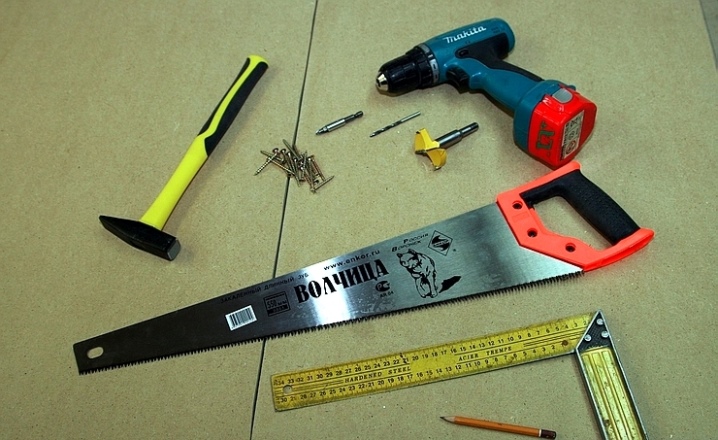
The general instruction consists of several sequential steps.
-
After determining the size of the structure, you need to choose its shape in accordance with the plant: for example, grapes like vertical and combined supports, tomatoes - vertical and long. A trellis in the form of a round fence is suitable for shrubs. Curly flowers will take root in any design.
-
All measurements, as well as the shape of the wall, must be entered into the drawing.
-
It is very important to correctly calculate the weight of the trellis wall. It should be at least twice the weight of the plant with fruits.
-
Using a solution, it is necessary to strengthen the main posts in the ground. If the structure is small, the posts are easy enough to bury. After that, you can move on to creating a lattice.
-
Reiki, bars, planks must be fixed according to the drawing or sketch.
-
The finished trellis can be painted - a popular option, for example, white. But first, the tree needs to be treated with antiseptics and other compounds that will prevent decay.
If the calculations are accurate, the weight ratio is taken into account, and the fasteners are solid, everything will definitely work out.
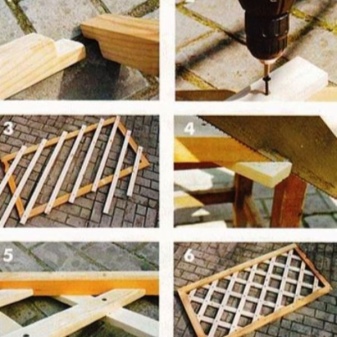
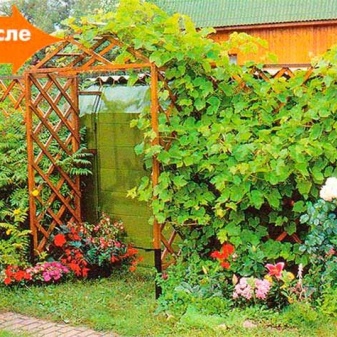
How to treat decay?
The main purpose of such treatment is to protect the tree from moisture and destructive biological effects. That is, we need compositions with antiseptics that extend the life of a wooden structure.
Types of compositions:
-
water based impregnation - do not smell, dry quickly, but do not penetrate very deeply into the structure of the tree;
-
organic solvent based formulations - on the contrary, they penetrate deeply into the tree, but have a pronounced chemical odor;
-
oil formulations - they also penetrate deep into wood fibers, preventing the tree from cracking, protect well from dust, dirt and moisture;
-
wax impregnation - they are self-sufficient, the tree is usually not painted after them, they create a thin protective film on the material;
-
varnishes - form a visible solid protective film, partially penetrate the fibers.
The packaging with the product usually clearly lists its functionality, application features and protective measures.

How to arrange?
High windage is inherent in trellis structures, therefore they must be tightly and firmly fixed in the ground. Or they need to be drowned enough deep into the soil. If the trellis falls accidentally, the plants may die. Consider fixing the trellis using the example of a pyramidal lattice for roses.
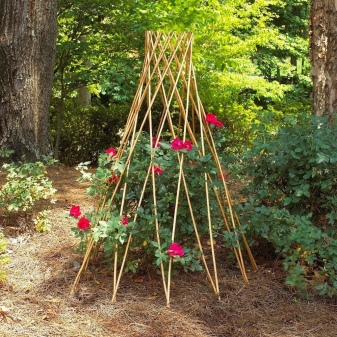
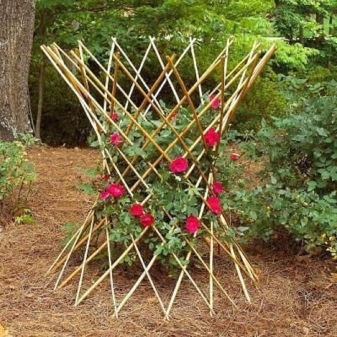
Two long boards of 6 m each are taken, slats, a saw and self-tapping screws. 1 m is cut from the boards, the remaining part is divided in half. You should already have four boards of 2.5 m and two boards of 1 m each. The boards are dismantled into 4 cm wide slats. Now you can assemble the pyramid with self-tapping screws. It remains only to plant roses from all the tapestry sides. Such a structure is simply strengthened in the ground, but if there are doubts about the weight of the future harvest, the trellis goes 50 cm into the ground with columns and is poured with concrete.
Examples in landscape design
The trellis lattice is beautiful, lovers of garden transformation can talk about it for hours. But examples work best of all conversations - visual evidence.
Consider 10 options for beautiful do-it-yourself tapestries.
-
Such a simple but very stylish design turns an ordinary corner of the garden into a gorgeous photo zone. The trellis against the background of an already mature green hedge is a great idea, because this hedge will then be beneficially transformed by the fruits growing on a wooden trellis.
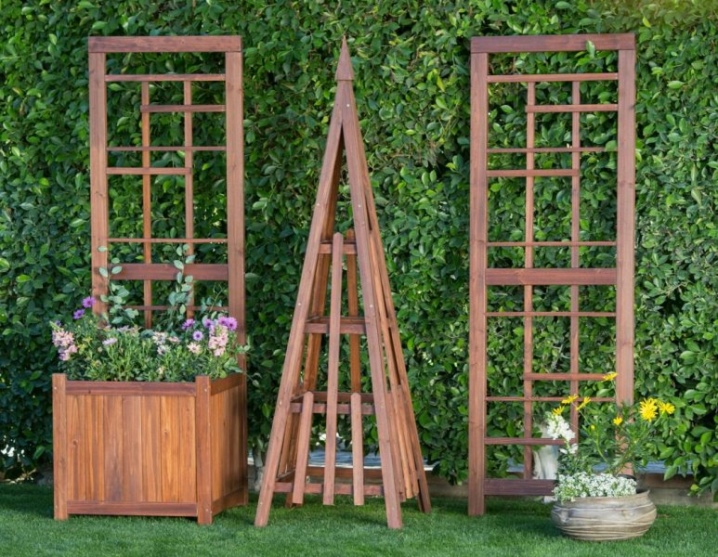
-
Painted white, with a bench in a sunny spot - a beauty for all time.
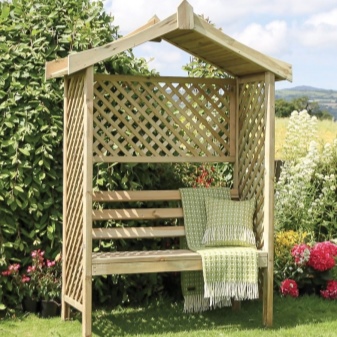

-
Tall wooden lattices look stylish even against a stone background: they are very beautifully framed by bright crimson roses. And the lantern between the tapestries is authentic.
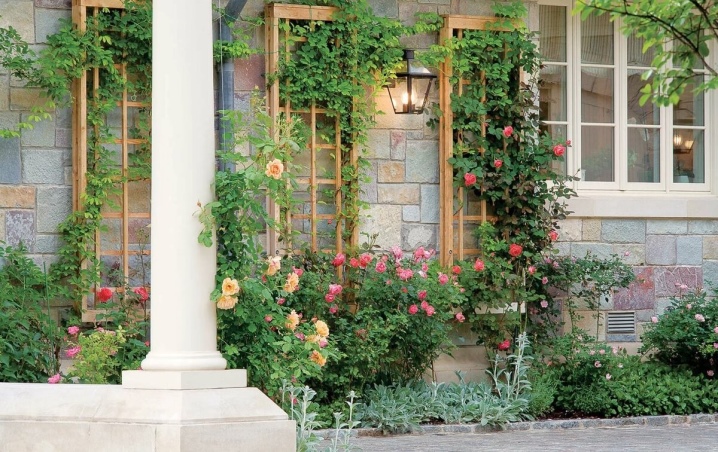
-
A simple wall-to-wall construction where light, fast-growing loaches will look good.
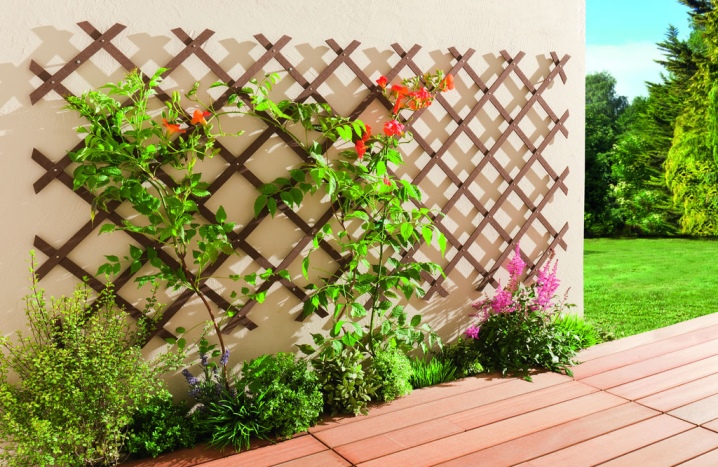
-
Here is such a triune trellis with a box at the bottom - a corner of joy for a florist. You can experiment with cultures. Such a design will look more advantageous against the background of a green fence.
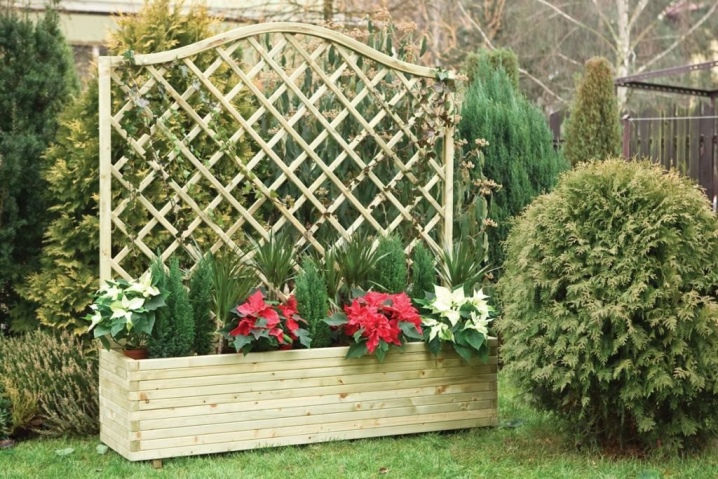
-
Also a simple construction with an understandable geometric shape. For decorating one of the walls of the house, a great and simple option.

-
This is a pergola, a close relative of the trellis. But the example inspires to make a white lattice structure on your site - it reminds of a long gone beautiful era, looks vintage and romantic.
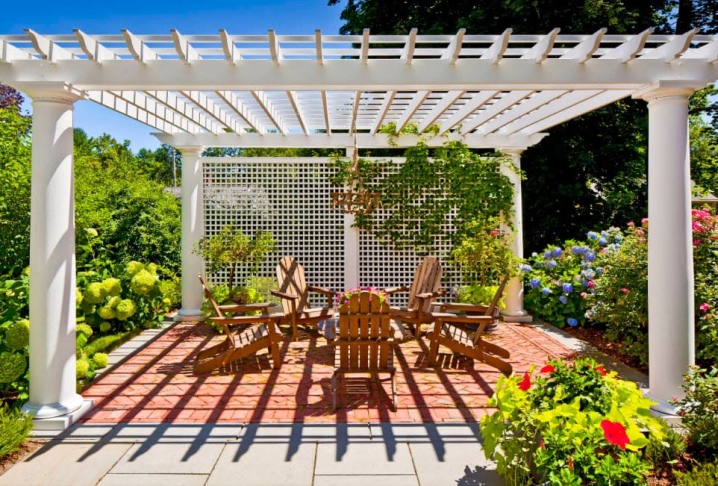
-
Reversible design with drawers. Convenient for dividing garden areas.
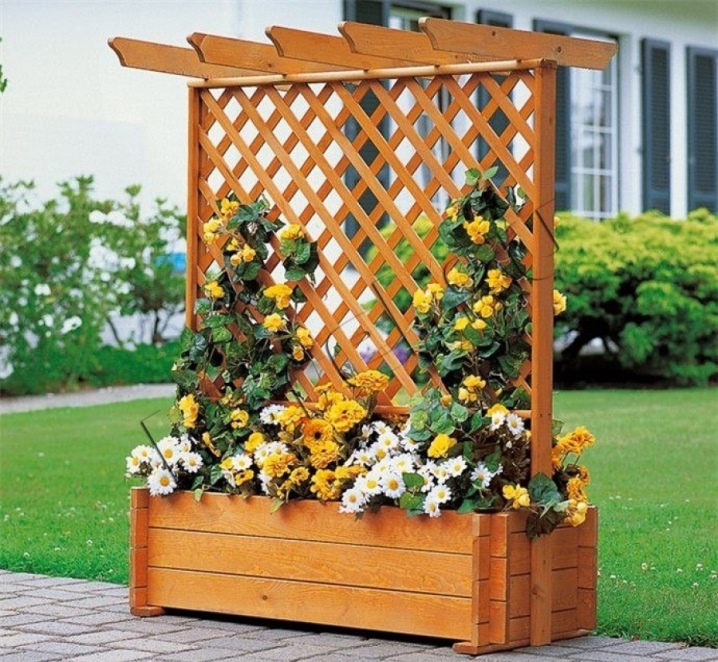
-
Such a garden swing is the highlight of the site. There is an option to make them without a roof. But this example shows a very comfortable and functional, self-contained design.
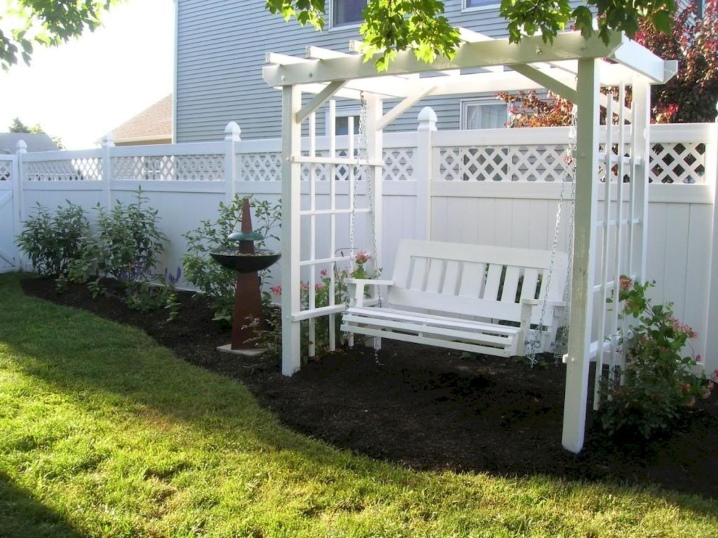
- A wall-mounted option that even a novice master will make. Looks good on both white and green backgrounds.

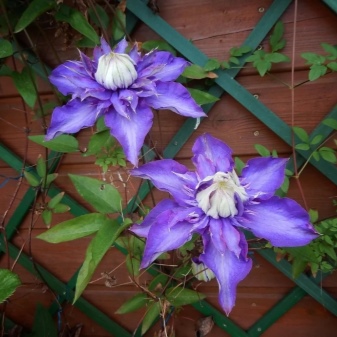
For information on how to make a trellis fence with your own hands, see the next video.


































































The comment was sent successfully.